Why heart disease is an electrical illness
How World War II & Calcium Shattered our Hearts
All articles are free. However, your support as a paid subscriber enables us to continue producing high-quality, independent research on important health topics like EMF.
As an ad-free platform, we rely on the support of our readers to keep this content accessible and free from external influence.
Here’s what you’ll learn in this article:
1. How heart attacks were rare before 1850
2. When high cholesterol being dangerous became a myth
3. Why statins may do more harm than good
4. When zoo animals began to have heart attacks
5. How WWII and radar created global electrical pollution
6. How chest pains of WWII soldiers were blamed on anxiety
7. The parallels between Soviet & US research on EMFs
8. When did farmers start getting more heart attacks?
9. How EMFs disrupt calcium - our bodies’ most abundant mineral
10. What types of cardiac disease can be caused by EMF?
11. How can we alleviate the impact of EMFs on our heart?
Known as the father of radio and inventor of the telegraph, Guglielmo Marconi had ten heart attacks after he began working with electricity. Marconi was 63 when his tenth and final heart attack killed him.
As soon as he began experimenting with radio equipment in 1896, Marconi, who was 22 years old at the time, began to have chills and fevers so severe his doctors thought he had malaria. He would often collapse completely from fatigue and pains in the chest, and was eventually diagnosed with heart disease.
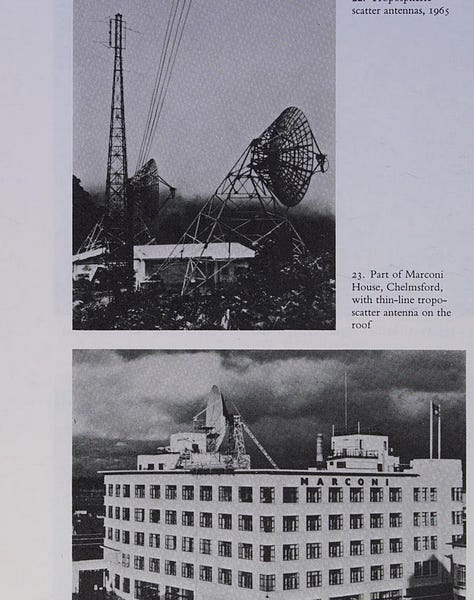
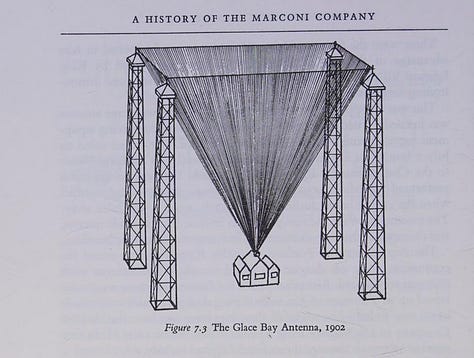
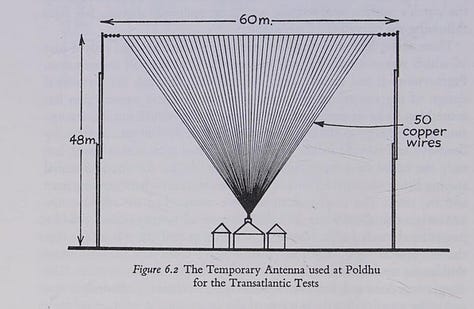
Marconi had erected radio towers as tall as a 12-story building, which would ultimately become the world’s first permanent radio station.
Heart attacks were rare before The Age of Electricity
If you lived in 1850, you were as likely to have died from a heart attack as you were from accidentally drowning. Heart disease was the 25th cause of death in the US.
Heart disease affected mainly older populations in rural areas, as farmers enjoyed longer lives than city-dwellers in those days.1
Today the story has changed. Heart disease is one of the top killers of young people.
If you’re in your forties and live in the US, you have as great a chance of having heart disease today as a seventy-year-old in 1970.2
Mortality from heart disease for Americans in their twenties rose by an astonishing one-third between 1999 and 2006.3
How did we get to be so sick?
Weren’t statins and the low-fat diet supposed to help?
Sidenote: natural EMFs (electromagnetic fields) like Sunlight require us to have sufficient amounts of LDL cholesterol before vitamin D can be liberated in our bloodstream:
The Cholesterol Myth
Myths aren’t always outright lies, but are often the stories we tell ourselves as a society. Even though there are kernels of truth in these stories, a half-truth always leads to a full lie.
Much of the cholesterol myth originates with the work of Ancel Keys, an American physiology professor who went to Europe in search of the root of heart disease.
Keys went to Italy right after World War II, when much of the European population was under tremendous environmental stress. He noticed that residents of Naples dined primarily on pasta, cheese, while a small class of rich people ate mostly meat.
He compiled data from six countries with high rates of heart disease and diets high in saturated fats.4 This led Keys to deduce that avoiding meat resulted in a lower probability of heart attacks, and he ignored the prevalance of cheese (a saturated fat).
Keys noticed that men in America, who ate a diet high in saturated fat, died from cardiovascular disease at a much higher rate than men in Japan, who ate very little saturated fat.
However these half-truths skewed the evidence. The Japanese ate far less sugar and processed foods than Americans, and ate considerably less food in general. Keys also didn’t include France in his study, who consumed a very high amount of saturated fat but had a low amount of cardiovascular deaths. Instead Keys would go on to name this statisical outlier “the French Paradox.”
In the 1960s, the American medical community began to advise people to stop consuming the butter and lard they’d been eating for centuries, and turning the population onto bread, pasta, margarine, along with vegetable oil, which is often highly-processed and can turn rancid, since it’s not stable at room temperature.
Danish physician Uffe Ravnskov sheds light on this controversy in his book The Cholesterol Myth (2000). Dr. Ravnskov shows how people are not having more heart attacks today because they’re eating more animal fats than our ancestors.
Cholesterol: a distraction from EMF pollution
Cholesterol turns out to be a red herring. The earlier studies Ravnskov cites (completed before 1950) show that cholesterol was not related to heart disease. In many cases, having higher levels of cholesterol pre-1950 meant you’d probably live longer than the rest of the population.
Many studies conducted after 1950 (after the global introduction of radar in World War 2) began to show just the opposite, and have correlated higher levels of cholesterol with an increased risk of death from heart attacks. This could be due to the fact that EMFs disrupt our ability to metabolize fat.
The Framingham Heart Study5 came out in 1961, the same year that the American Heart Association (AHA) issued a report telling people with a high risk of heart disease to cut down on saturated fat.
(Note: Proctor & Gamble, the makers of Crisco, a substitute for lard, donated 1.7 million to the AHA in 1948, the same year the AHA became a prominent organization in US politics.)6
Do statins help prevent heart disease?
The modern cholesterol-lowering drugs, the statins, do help prevent cardiovascular disease, but the effect is extremely small. Unfortunately, statins disrupt and lower growth hormone and testosterone. As a result statins can also stimulate cancer, disturb muscle function, affect the heart and the brain, and pregnant women taking them may give birth to children with malformations.7
You can find a copy of the study linking to the above-mentioned effects of taking statins, and how these side effects are misleadingly reported in the Adverse Events System of the FDA here.
From Dr. Ravnskov’s book of studies The Cholesterol Myth :
“In a review of 37 statin trials, the benefit is miniscule. In a few of the experiments, cardiovascular or total mortality was even highest in the treatment groups, although not with statistical significance.
To “improve” the results from the statin trials, the authors have even misused statistics. If two patients die in a control group of 100 individuals, but only one in the treatment group, the benefit is of course only one percent. No, no, the the statin supporters may say, the benefit is 50%, because one is 50% of two.”
Heart attacks in zoo animals?
A study of over 13,000 autopsies of animals that had died at the Philadelphia zoo recorded the first heart attacks of zoo animals in 1955.
In 1945, heart disease did not exist in the zoo.
By 1963, over 90% of all mammals and 72% of all birds that died in the zoo had heart disease. The diet of the animals had remained the same between 1935-1964.8
What was the pivotal global event that occurred in the mid 1900s, the point at which studies on cholesterol began to differ from one another?
World War II’s silent atomic weapon
Even though the war officially ended with the dropping of a nuclear bomb, this was only the start of the global radiation to come.
As World War II began, hundreds of thousands of people were now being subject to radiofrequency (RF) radiation. The entire population, and not just the military, were being exposed at unprecendented levels of RF radiation. The war had spawned a plethora of new industries that were using radiowaves in television and radio broadcasting, heating, navigation, as well as “radar ranges” for the home.
Radar technicians often would complain of headaches, fatigue, chest and eye pain, and were sent for a quick medical exam and ordered back to work when nothing dramatic showed up on their blood work.9
The majority of these employees worked at Lockheed and were exposed to radar intensities of 3.9 milliwatts per square centimeter- a level that is almost four times the legal limit for exposure of the general public in the US today.
When more and more American troops began to report sick because of heart symptoms, President Roosevelt created a Committee of Medical research to investigate. In 1941, Mandel Cohen, a Professor at Harvard Medical School, was put in the lead of this investigation along with a team of researchers. Their 150-page report and body of work has long been forgotten, and it is thanks to scientist
who describes their studies in his groundbreaking work The Invisible Rainbow, that this information lives on.Chest Pains of WW2 soldiers chalked up to “anxiety”
Dr. Cohen and his team took the complaints of chest pain by these soldiers very seriously, and did not discount them as being symptoms of anxiety, or “low moral fiber”, as these troops were often told they had. Anxiety was a term invented by Freud, and was a physical, not a mental, manifestation of illness.
Conveniently, Freud had coined the term anxiety nervosa as the Industrial Revolution and electrification of the planet with thousands of miles of telegraph wire was in full swing. You can read more about the true origins of anxiety in my previous post here:
Most patients studied by Cohen’s team were found to be hypersensitive to electricity, as they pulled their hands away from even low-level electric shocks. Patients were asked to run on a treadmill for three minutes, and could only run for a minute and a half. Their heart rate after walking a treadmill for fifteen minutes was found to be excessively fast, and their oxygen consumption during exercise was abnormally low. They were found to use less oxygen than a normal person, even when they breathed the same amount of air.
The researchers concluded that the patients had suffered from a defect of metabolism. The engines of our metabolism are our mitochondria, and require sufficient levels of oxygen to function.
Soviet research on “soldier’s heart” agrees
The Soviets performed research in the 1950s, 60s, and 70s that was in agreement with Cohen’s team, and concluded the symptoms of heart disease stemmed from a defect in metabolism. Working in Kiev and Kharkov (modern day Ukraine), Dumanskiy, Shandala, Kolodub, and Kiselev proved that the activity of the electron transport chain- the mitochondrial enzymes that extract energy from our food- is diminished in animals that are exposed to radio waves and magnetic fields from ordinary electric power lines.10
Ultimately what the work of Dr. Cohen and Soviet researchers proved was that the “soldier’s heart”, often described as lacking oxygen, came to be not due to a deficiency in the lungs, but in the cells. Blocked arteries were not the cause of these soldiers’ hearts craving and gulping air.
Their cells could not efficiently use the air they were breathing. The misuse of oxygen then led the mitochondria, the engines of our metabolism, to struggle in breaking down fats, carbohydrates, and proteins:
“Unburned fats, together with the cholesterol that transported those fats in the blood, were being deposited on the walls of arteries. Humans and animals were not able to push their hearts quite as far as before without showing signs of stress and disease. This takes its clearest toll on the body when it is pushed to its limits, in athletes and in soldiers during war.”
-Arthur Firstenberg, The Invisible Rainbow
Did cholesterol lead to heart disease?
Yes, but only due to the fact that cholesterol itself could no longer be metabolized in these patients. Otherwise, having high levels of cholesterol before the 1950s were shown to extend life, rather than lead to an early death.
Do Farmers Get More Heart Attacks?
In the 1940s, the Roosevelt administration made it a national priority to electrify all rural communities in the US.
In the beginning of the article I mentioned how heart disease mainly affected older populations in rural areas. In the mid 1800s, heart disease ranked as the 25th cause of death in the US.
Studies conducted by epidemiologists such as Samuel Milham, M.D., revealed that during the 1940s, not only cancer, diabetes, but heart disease was directly related to residential electrification.11 Rural communities had very little heart disease until they were subject to this electrification.
In 1940 people in the country began to suddenly die from heart disease at five times the rate as those who lived away from electricity.12

The graph above shows that the amount of rural heart disease was in direct proportion to the number of electrified rural homes in those states.
The Calcium Connection
If you have a heart condition, chances are you might be put on a calcium channel blocker. This is because the engines of our cells mentioned above, our mitochondria, require precise amounts of calcium to keep us healthy.13

How does EMF disrupt calcium?
Calcium is the most abundant mineral in our body, and isn’t just contained mostly in our bones. Our hearts, brains, and reproductive organs have dense concentrations as well. Calcium is responsible for muscle contraction, nerve function, cel growth, learning, memory, and blood clotting.
Professor emeritus of biochemistry and preeminent EMF researcher Martin Pall has proposed yet another pathway of EMF damage: voltage-gated calcium channels (VGCCs). Calcium is far more concentrated outside our cells than inside, and these electrical gates (VGCCs) tightly govern how much calcium our organs receive. If this highly regulated system is disrupted, chaos for our body ensues through the formation of reactive oxygen species (the opposite of antioxidants).
In 2013, Pall reviewed 26 studies on calcium and concluded that EMFs activated these VGCCs after about five seconds, flooding the inside of the cell with an unhealthy amount of calcium ions at a rate of about one million per second.
Our electric heart
Our heart has one of the largest densities of VGCCs, and is highly sensitive to EMFs for this reason. Dr. Pall believes that the increasing rates of sudden cardiac death could be due to the rising exposure to EMFs, resulting in excessive activation of VGCCs.14
EMFs can trigger the following cardiac conditions:
Cardiac arrhythmia (irregular heartbeat) - responsible for half of all deaths from heart disease each year.
Blood pressure - The Lancet published a 1998 study that found using a cell phone can lead to a 5-10 milligram Hg (mercury) rise in blood pressure.15 In 2013 Italian researchers presented their data at the annual conference of the American Society of Hypertension, that answering and talking on a cell phone raised blood pressure in patients with an average age of 53 by an average 5-7 milligrams Hg.16
What are some natural strategies we can take to normalize blood pressure?
Magnesium - I don’t buy many supplements, but this is one that I take daily (600mg of elemental magnesium). There are various forms, but I like bis-glycinate since it’s very absorbable. Magnesium helps our bodies maintain healthy calcium levels and supports our VGCCs.
Flaxseed - due to its high alpha-linoleic acid content (a heart-healthy omega 3 fatty acid), has been shown to lower blood pressure. 17 When my wife
was diagnosed with high blood pressure, she took flaxseed for a month and had a significant drop in blood pressure.Sunlight - helps our bodies produce more nitric oxide, which dilates our blood vessels and lowers blood pressure as a result. Get out there, and get your skin in the game!
You are more powerful than you know,
Roman
If you’ve found this article valuable, please consider sharing it with loved ones.
Want to take proactive steps in your health?
We’re creating a course on EMF!
How can we measure EMFs in our environment?
What are other sources of electricity we may have forgotten about, like piping in our homes?
What are some other ways we can nourish the electric field of our body?
I’ll be covering these types of specifics, along with practical steps we can take to reduce EMFs in our daily lives, in the Wireless Health & Safety course I’m creating.
Start educating yourself today with ancestral strategies!
Check out our 5-Part series on how to treat damage from EMF.
EMF Health Forum: Please share your story
If you suspect that you or your animals are suffering from symptoms related to EMF, I strongly encourage you to register and post symptoms on EMF Health Forum, which I recently created to track the global fallout from wireless radiation:
Support Decentralized Medicine: Donate in Bitcoin
Send to our BTC Address!
bc1qfwtn8f95z7urkgfgj8c9t6dt3lay0shtgazr72
The new 5G meter by Safe Living Technologies is out!
Firstenberg, A. (2020). The Invisible Rainbow. pp. 193-194
Cutler et al. 1997.
National Center for Health Statistics 1999, 2006.
A. Keys, “Atherosclerosis: A Problem in Newer Public Health,” Journal of Mt. Sinai Hospital, New York, (1953): 134.
H.M. Marvin, 1924-1964: The 40 Year War on Heart Disease (New York: American Heart Associatioin, 1964).
Ratcliffe et al. 1960 p. 737
Daily 1943; Barron et al. 1955; McLaughlin 1962.
Chernysheva and Kolodub 1976.
Firstenberg, A. (2020). The Invisible Rainbow. p.165
Garbincius JF, Elrod JW. Mitochondrial calcium exchange in physiology and disease. Physiol Rev. 2022 Apr 1;102(2):893-992. doi: 10.1152/physrev.00041.2020. Epub 2021 Oct 26. PMID: 34698550; PMCID: PMC8816638.
Pall ML. Electromagnetic fields act via activation of voltage-gated calcium channels to produce beneficial or adverse effects. J Cell Mol Med. 2013 Aug;17(8):958-65. doi: 10.1111/jcmm.12088. Epub 2013 Jun 26. PMID: 23802593; PMCID: PMC3780531.
Braune, Stefan et al. “Resting blood pressure increase during exposure to a radio-frequency electromagnetic field.” The Lancet 351 (1998): 1857-1858.
https://greenmedinfo.com/article/meta-analysis-flaxseed-consumption-may-reduce-blood-pressure





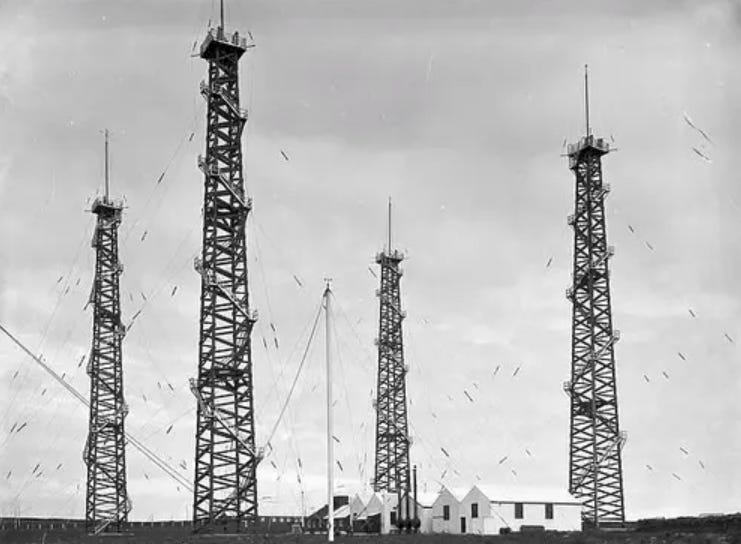
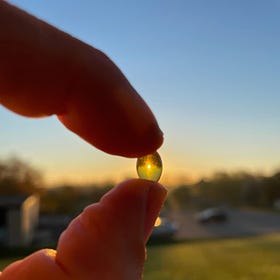

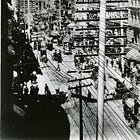
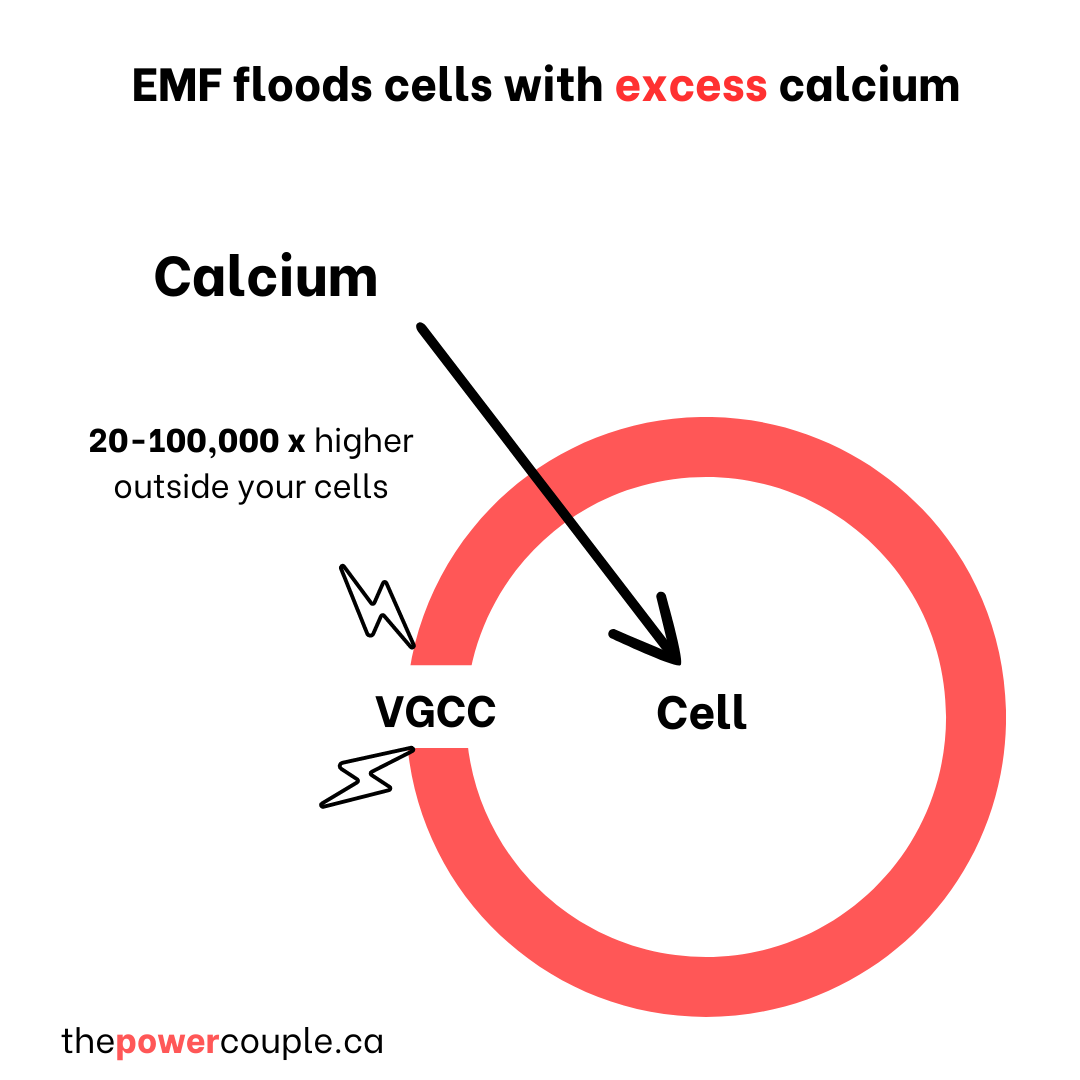



Excellent article. The increase of intracellular Ca2+ by 5G is described in the following paper, too.
https://www.ncbi.nlm.nih.gov/pmc/articles/PMC8580522/
Pretty scary that so many people are still not aware of this.
Great piece!
Happy to see trial statistics gimmicks being called out!
It’s everywhere, the RR in statins, vaccines, etc.
Not because we are limited by methods and the RR and AR are the best they have means that we should accept it. If it doesn’t make sense, then I can’t believe in it.
They’re going to continue using these things to tell the story they want and the layman will be led to believe anything they want us to believe.